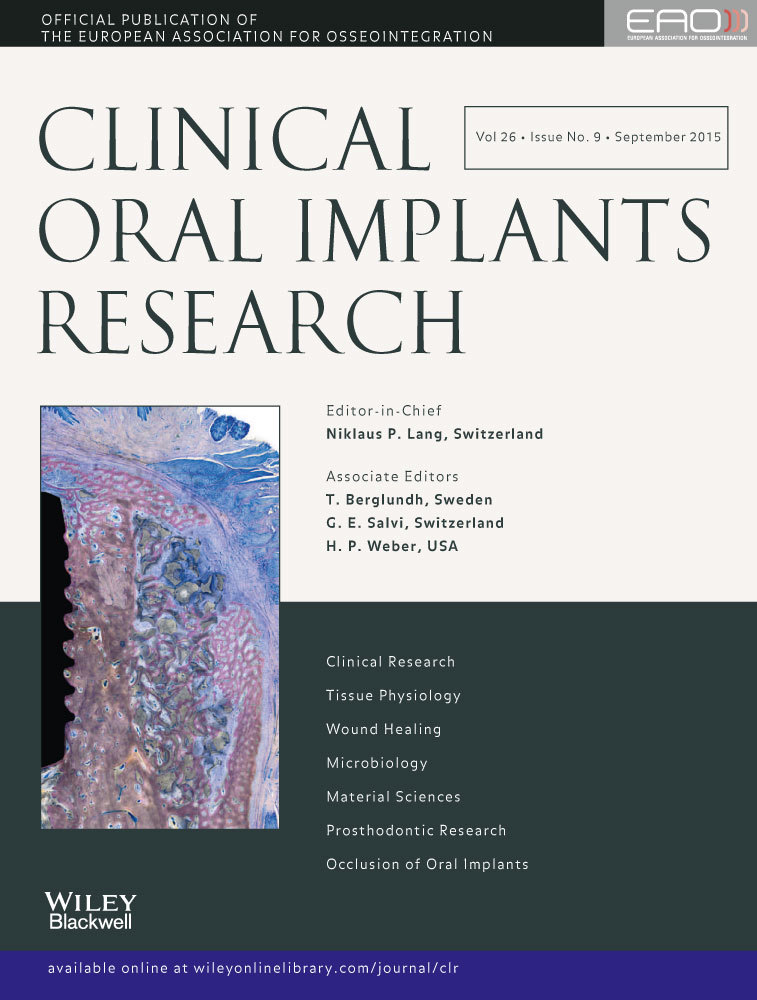Implant decontamination with 2% chlorhexidine during surgical peri-implantitis treatment: a randomized, double-blind, controlled trial
Abstract
Objective
The objective of this randomized, double-blind, controlled trial was to evaluate the clinical, radiographic, and microbiological effects of implant surface decontamination with a 2% chlorhexidine (CHX) solution in comparison with a 0.12% chlorhexidine + 0.05% cetylpyridinium chloride (CPC) solution during resective surgical peri-implantitis treatment.
Material and methods
Forty-four patients (108 implants) with peri-implantitis were treated with resective surgical treatment consisting of bone re-contouring, surface debridement and chemical decontamination, and apically repositioned flap. Patients were randomly allocated to decontamination with a 2% CHX solution (test group) or 0.12% CHX + 0.05% CPC (control group). Clinical and radiographic parameters were recorded before treatment (baseline), and at 3, 6, and 12 months after treatment. Microbiological parameters were recorded during surgery.
Results
Multilevel analysis showed no significant differences in bleeding, suppuration, probing pocket depth, and radiographic bone loss between control and test group over three follow-up measurements (3, 6, and 12 months) from baseline. Both decontamination procedures resulted in significant reductions in anaerobic bacterial counts on the implant surface, but no significant difference was noted between control and test group (mean log 3.37 ± 2.34 vs. 3.65 ± 2.87, P = 0.99).
Conclusions
The use of a 2% CHX solution for implant surface decontamination during resective peri-implantitis therapy does not lead to improved clinical, radiographic, or microbiological results compared with a 0.12% CHX + 0.05% CPC solution. Overall, the additional use of CHX reduces anaerobic bacterial load on the implant surface better than mechanical debridement alone, but does not seem to enhance clinical treatment outcomes (ClinicalTrials.gov number NCT01852253).




